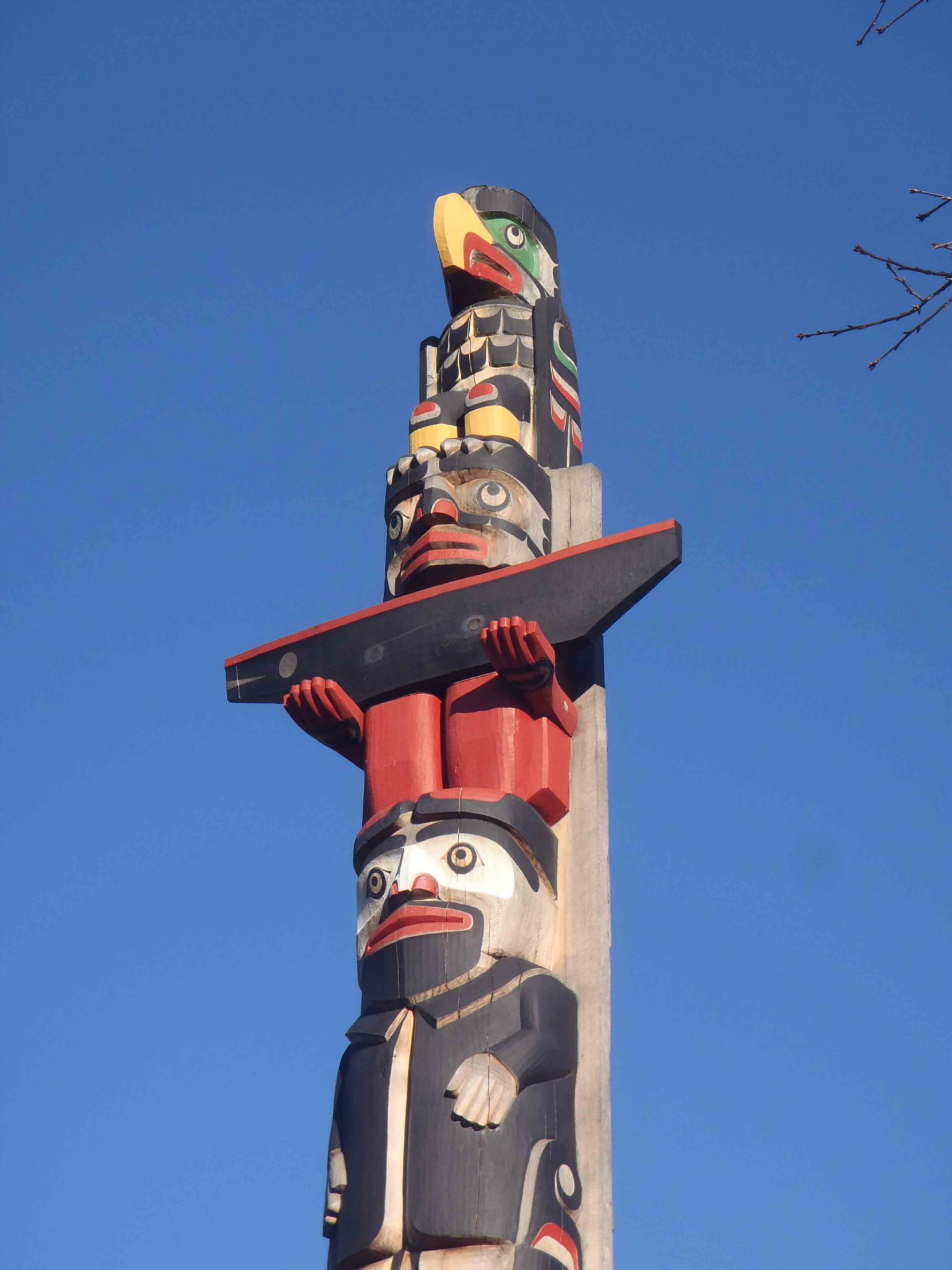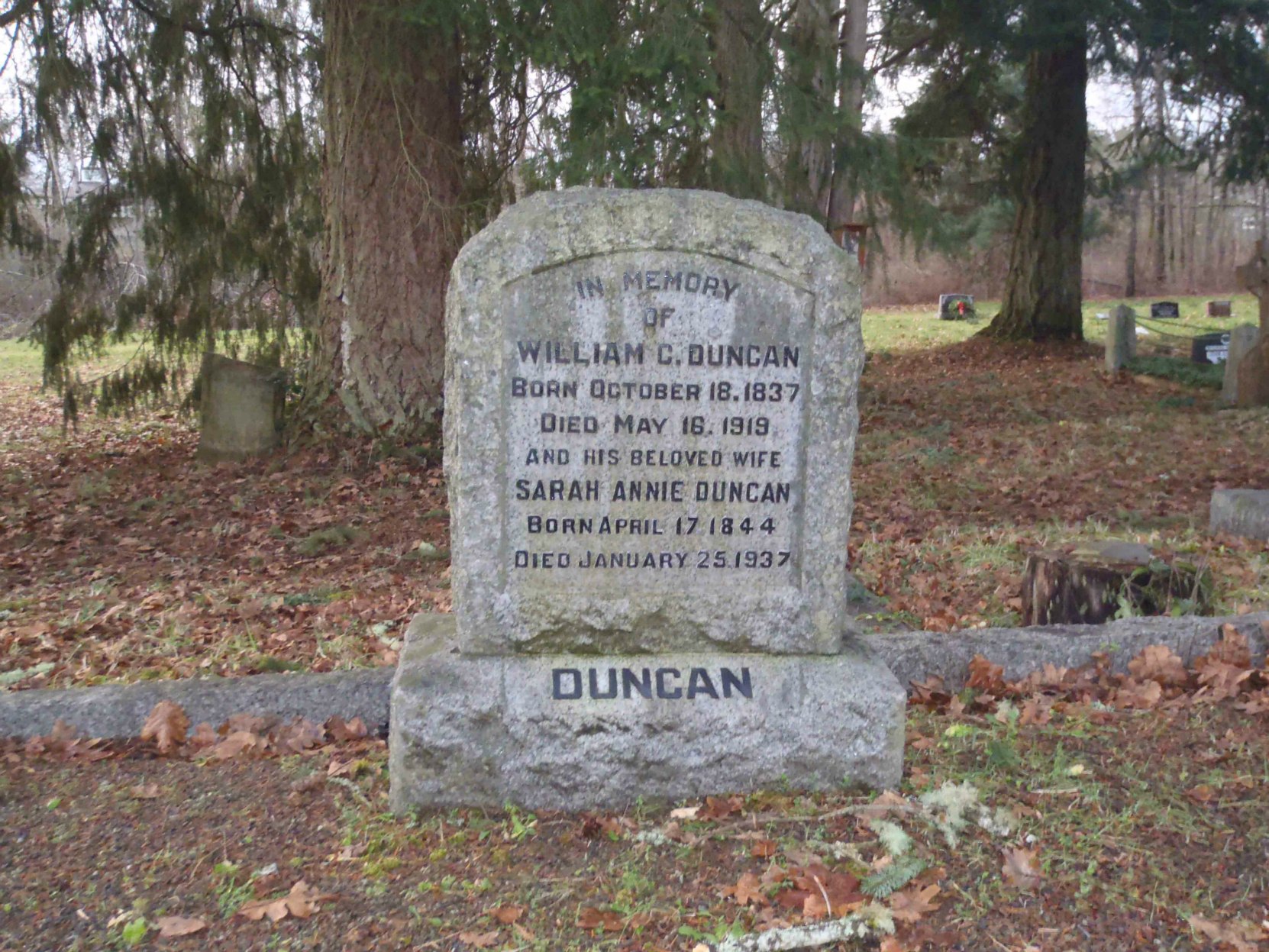William Chalmers Duncan (1836-1919) was one of the first white settlers in the Cowichan Valley and he is the person who the City of Duncan is named for. The City of Duncan is largely built on land once owned by William Chalmers Duncan.
He is depicted on the Centennial Pole (totem pole) in Charles Hoey Park, near the intersection of Canada Avenue and Station Street.

His son, Kenneth Forrest Duncan, was the first Mayor of Duncan following the city’s incorporation in 1912 and is associated with the building that is now the Duncan & Christmas Heritage Mall, 149 Canada Avenue, and with the construction of the Duncan Masonic Temple, 163 Canada Avenue, in downtown Duncan.
Here is a link to a photo of William Chalmers Duncan, circa 1888 from the Cowichan Valley Museum.
Here is a brief biography of William Chalmers Duncan’s taken from his 1919 obituary in the local Cowichan Leader newspaper:
“Mr. William Chalmers Duncan died on Friday at his home in Duncan. The story of his long life of 83 years is bound up with the history of the pioneers who, from so many lands, sought fortune on the farthest west.
Both his parents were Scottish. he was born in Sarnia, Ontario, in October 1936 – when William IV sat on the British throne – he left home in the fall of 1861 for New York, whence he travelled via Panama to San Francisco. In the spring of 1862 he was one of a company of intending gold-seekers who landed in Victoria on May 14th of that year. They voyaged up in the old “Pacific“, lost fifteen years later with 120 passengers.
Lack of provisions delaying his journey to the Cariboo, he returned to Victoria and put his name down as a settler for Cowichan. He was among the hundred intending farmers taken by H.M.S. Hecate to Cowichan Bay in August 1862. The party split into three: some going to Shawnigan, others to Somenos, and others to Quamichan.
Mr. Duncan settled on land a mile south of the wharf [at Cowichan Bay] and wintered there. In March 1863 he headed for Cariboo and spent a year there, teaming, bridge building and doing other work. The spring of 1864 found him taking up a new homestead in Quamichan district. This is the land on which now stands the city called by his name.
With Tom Windsor, Mr. Duncan built the first log shack in Cowichan. In the fall of 1875 he and Mr. Harry Evans were building St. Peter’s church, Quamichan. This was the year in which the survey of the E&N line was begun. In 1876 Mr. Duncan was married. Gradually he cleared his land, and as the settlement grew, was ever to the fore in all that made for further development.
He was one of the “fathers of incorporation” who created North Cowichan municipality, and for some years served on the council. He assisted to lay the foundations on which have been built such community institutions as the Cowichan Agricultural Society and the Cowichan Creamery.
He helped to build the first agricultural hall and gave the society the land on which it stood. When the whole creamery project appeared to be falling through, he offered a site at a nominal sum and on this the creamery now stands. He was closely connected with the old Cowichan Lending library.
Mr. Duncan leaves his wife and four children, Mr. K.F. Duncan, M.L.A., Mrs. F.C. Holmes, Mrs. F.R. Gooding and Mrs. W.A. McAdam. The funeral took place on Saturday at St. Peter’s church, Quamichan, the Rev. F.G. Christmas officiating. The pallbearers were Messrs. John N. Evans, D. Alexander, E.B. McKay, A.R. Wilson, J.W. Edgson and D.H.B. Holmes.”
[source: Cowichan Valley Museum & Archives collections]
William Chalmers Duncan and his wife, Sarah Annie Duncan (1844-1937), are buried in St. Peter’s Quamichan Anglican Cemetery, North Cowichan.

Would you like to leave a comment or question about anything on this page?